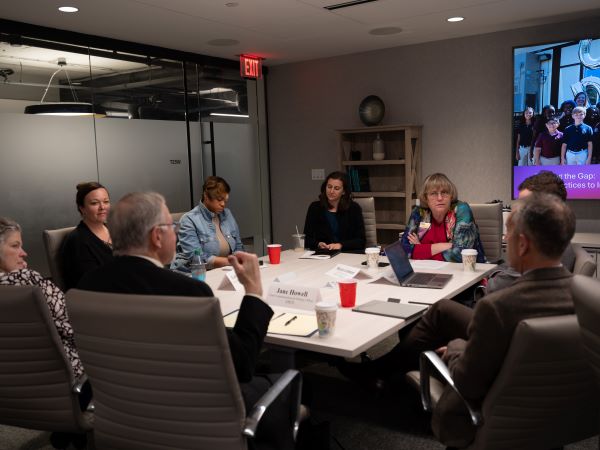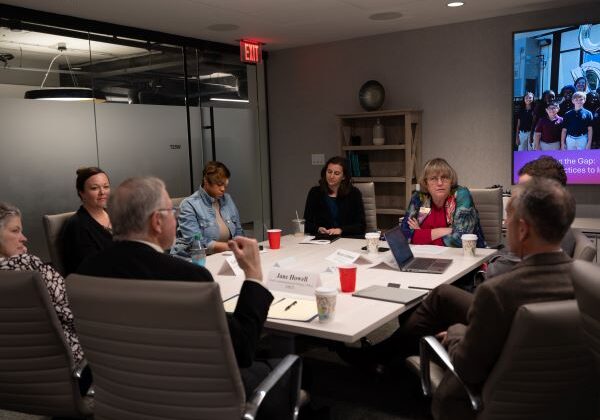One year ago, more than three dozen leaders in engineering and public works, government, and academia gathered in ACEC’s offices to collaborate and strategize on how our industry can begin to close the gap between the work we have been charged with doing and the people we need to attract to perform it. When the group closed the books on that first-ever Engineering Workforce Summit, the key takeaway was that we couldn’t simply adjourn, check the box, and consider the mission accomplished. That was the impetus behind the Engineering Workforce Consortium, which this week met for an intensive workshop to gauge the year’s progress, determine direction, and recalibrate priorities against a changed political landscape.
ACEC President & CEO Linda Bauer Darr kicked off the session by recounting some of the EWC’s key wins over the last year, which include the signing of the Consortium’s Memorandum of Understanding, creating new platforms like the EWC website and newsletter to facilitate collaboration and idea-sharing, and expanding membership to include ASHRAE (American Society of Heating, Refrigerating and Air-Conditioning Engineers) and SMPS (Society for Marketing Professional Services) which officially joined the Consortium at the conclusion of the workshop. Darr both acknowledged and celebrated the year’s gains, but declared, “We haven’t done enough. I will never think we’ve done enough.”
Much of the discussion centered on how the industry must do a better job of communicating what engineering truly is and what it isn’t. Presenters and attendees alike pointed to the prevailing misconception that a career in engineering means a life spent sequestered in a cubicle doing vector calculus. It’s a misconception that furthers narrows the engineering pipeline, as students who may be less mathematically inclined self-select away from the field. “We’re weeding out people who could be valuable,” said one attendee.
That discussion led to a larger question about the curriculum taught by engineering programs, with one presenter pointing out that what is taught in most programs is fundamentally unchanged since 1955. Attendees agreed that a wholesale revision of engineering curriculum is both overdue and required, and that any new curriculum must be intentionally interdisciplinary, with a heavy emphasis on technology, and an equally heavy emphasis on the people side of engineering. This isn’t merely an academic exercise; it’s a necessary recalibration to align educational outcomes with industry need, and it will require a robust collaboration between those who educate and those who employ.
Attendees agreed that changes to curricula aren’t enough, and that the industry must foster meaningful mentorship opportunities that connect seasoned professionals with the next generation of engineers. This connection is crucial, in that it provides students and younger workers with access to insight and experience that can’t be found in any textbook. Several presenters made the case that the engineers of tomorrow will be shaped by the guidance they receive today.
This led to ACEC Workforce Committee Chair Rodney Chester sharing a personal example about how much our words matter. The usually conservatively dressed Chester stood up and directed the room’s attention to his trousers, patterned in several shades of gray plaid. “I told my wife to buy me dark gray and light gray pants, and this is what she bought,” Chester said, laughing. “At first, I was like, ‘I will never wear those.’ But now, I use them as a reminder of how important good communication really is.”
In the coming weeks, leadership of the Consortium will be synthesizing the recommendations made during the workshop and will be formulating recommendations and identifying an action plan for community engagement.






